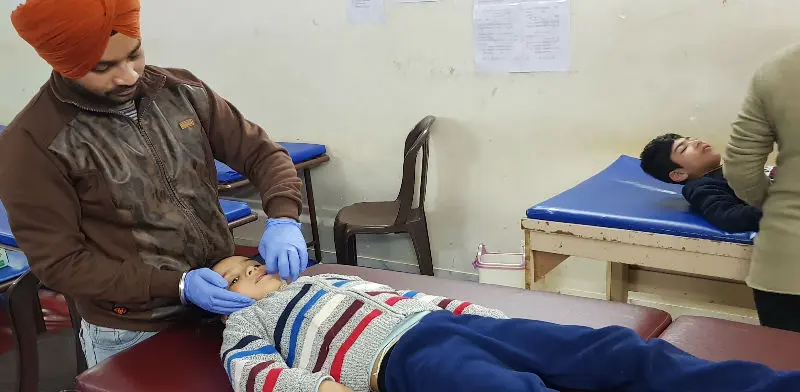Sensory Processing Disorder (SPD) is a disorder that inhibits the brain’s ability to process information from the senses and respond accordingly. Though it is common in children with autism, those with no association to any developmental disability can also develop the symptoms of SPD. Children suffering from Sensory Processing Disorder often face trouble with their behaviour and development. They also experience learning disorders and have problems conducting their normal day-to-day functioning. Although many researches are still being conducted to find more about the disorder and its treatment, there are some therapies and programs through which the condition can be improved. Let us find out more about Sensory Processing Disorder, its symptoms and treatment.
Types of Sensory Processing Disorder
Sensory Processing Disorder can be described in two types, hypersensitivity and hyposensitivity. While on one hand children with hypersensitivity feel or sense things too much, those with hyposensitivity may sense things very poorly. The extent to which one or more senses can be affected by SPD varies from one child to another.
Sensory Processing Disorder- Look Out for These Signs
A child affected by hypersensitivity may react overly to simple actions like touch or hug, or certain taste or smell or noise. On the other hand, children with hyposensitivity struggle hard to feel the environment and the world around them. Both underreacting and overreacting in any situation can put the children at various risks. Now the question that arises is how to find if a child is suffering from SPD. There are some symptoms through which parents can identify Sensory Processing Disorders in their children.
Symptoms of Sensory Hypersensitivity
- Sensitivity to sudden or loud noises
- A heightened feeling of stress, fear, or anxiety
- Easy distraction from background noises that other people do not even notice
- Discomfort when wearing clothes or eating certain foods because of their texture
- Fear of crowds or closeness, afraid to touch and cuddle with family too
- Feeling overly excited and restless all the time
- Inability to focus on anything due to competing sensory input
- Unable to balance their body or tell where the limbs are
- Extremely afraid to play with outdoor playground equipment like swings or trampoline
Symptoms of Sensory Hyposensitivity
- Clumsy behaviour and fidgeting all the time
- Trying to establish contact with another person, unable to realize personal boundary
- Unable to understand or feel pain and extreme temperatures
- Crave for fast or intense movement and can’t sit still
- Difficulty understanding strength, causing unintentional harm to other children or pets
- Putting things like rocks or their own hands into the mouths
- Keep looking for things that give them thrill (even dangerous things) just to get hold of any feeling
Children and Sensory Processing Disorder
Sensory motion allows children to understand their limbs and their movement. Those suffering from SPD will find it difficult to apprehend their senses and act according to them. The symptoms for Sensory Processing Disorder normally develop in children at an early age. And since they seem to be picky all the time, parents find it hard to find out if the child is just being a child or suffering from SPD. Even if they find out about the disorder, they feel totally clueless and helpless on how to help their children. Help can now be found with IIAHP in Chandigarh which has been offering Therapy For Special Need Children, helping them be a part of the world, the future that they are.
How Sensory Processing Disorder Can Be Treated?
There are certain ways available through which children with SPD can be helped. Therapies and other sensory development programs are conducted by the professionals at IIAHP to help children struggling with hypersensitivity or hyposensitivity. A tailored program is designed keeping in mind the type and extent to which SPD is present in children. A completely non-medical approach is followed that includes a sensory development approach through physical development, sensory engagement and cognitive exercises. Every child gets special attention and a dedicated plan and professional to help them out with their problems so they pave their way into the future smoothly.






